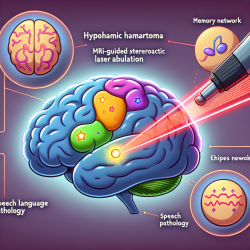Introduction
The recent study titled "The overlapping genetic architecture of psychiatric disorders and cortical brain structure" provides groundbreaking insights into the shared genetic factors influencing both psychiatric disorders and brain structure. By examining genetic loci shared between psychiatric disorders and cortical brain structures, this research opens new avenues for understanding the neurobiological underpinnings of mental health conditions.
Key Findings
The study utilized pleiotropy-informed conjunctional false discovery rate analysis on a vast dataset of approximately 700,000 individuals of European ancestry. Key findings include:
- Identification of 50 genetic loci shared between psychiatric disorders and surface area, and 26 loci shared with cortical thickness.
- Bidirectional effects of risk alleles on cortical thickness and surface area, leading to extensive pleiotropy.
- 80% of shared genetic loci displayed consistent directions of effect across multiple disorders.
- Hierarchical genetic architecture was observed, with the association cortex and sensorimotor cortex representing extremes of shared genetic influence.
Implications for Practitioners
For practitioners in the field of speech-language pathology and related disciplines, these findings highlight the importance of considering genetic factors when assessing and treating psychiatric disorders. Understanding the genetic overlap between brain structure and psychiatric conditions can inform more targeted interventions and support personalized therapy approaches.
Practitioners are encouraged to delve deeper into the genetic aspects of psychiatric disorders to enhance their diagnostic and therapeutic strategies. The study's findings underscore the need for a comprehensive approach that integrates genetic data with clinical practice.
Encouraging Further Research
This study serves as a catalyst for further research into the genetic architecture of psychiatric disorders and brain structure. Future investigations could explore the development of pleiotropy-enriched polygenic scores to improve the prediction and management of psychiatric conditions.
Additionally, expanding research to include diverse populations will enhance the generalizability of these findings and contribute to a more inclusive understanding of the genetic factors influencing mental health.
Conclusion
The study's insights into the shared genetic architecture between psychiatric disorders and cortical brain structure represent a significant advancement in our understanding of the genetic factors influencing mental health. By integrating these findings into clinical practice, practitioners can improve outcomes for individuals with psychiatric disorders.
To read the original research paper, please follow this link: The overlapping genetic architecture of psychiatric disorders and cortical brain structure.










